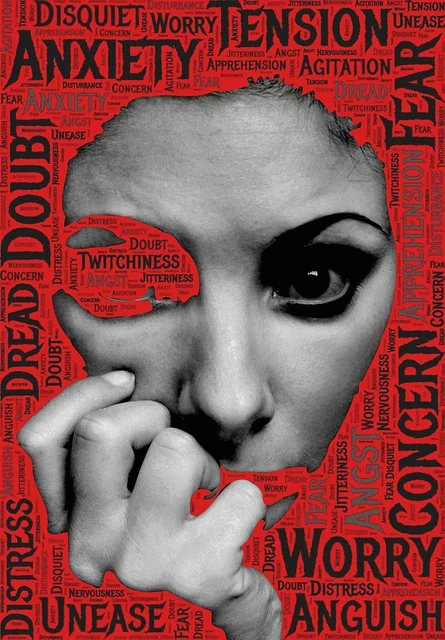Eating disorders are medically significant illnesses that impact an individual’s physical and mental well-being. These conditions also include issues with your eating habits and thoughts on food, eating, weight, and form. Your capacity to operate in key areas of your life, as well as your health and emotions, may be impacted by these symptoms.
Disorders of eating can cause death in certain situations and develop into chronic difficulties if they are not properly addressed. Anorexia, bulimia, and binge-eating disorder are the three most prevalent eating disorders.
The DSM-5 defines eating disorders.
Feeding & Eating Disorders is the category under which eating disorders are listed in the DSM-5 (Diagnostic & Statistical Manual of Mental Disorders, Fifth Edition). According to the DSM-5, eating disorders are “characterized by a persistent disturbance of eating or eating-related behavior that results in the altered consumption or absorption of food that significantly impairs physical health or psychosocial functioning.

The disorders of “pica, rumination disorder, avoidant/restrictive food intake disorder, anorexia nervosa, bulimia nervosa, and also binge-eating disorder [1]” are all covered by the diagnostic criteria in this group.
Types of eating disorder
There are different types of eating disorder
Anorexia nervosa
The DSM-5 states that in order to diagnose an individual with anorexia nervosa, they must consistently restrict their energy intake, exhibit a severe fear of gaining weight or being fat, engage in a behavior that prevents them from gaining weight, and have a disturbance in their own perception of their body’s weight or shape [1].
Though this isn’t always the case, these people frequently have body weights that are “below a minimally normal level for age, sex, developmental trajectory, and physical health.” It is impossible to tell if someone has anorexia just by looking at their body.
Bulimia nervosa
“Recurrent episodes of binge eating, recurrent inappropriate compensatory behaviors to prevent weight gain, and self-evaluation that is unduly influenced by body shape and weight [1]” are the three key characteristics of bulimia nerveosa.
To be eligible for a diagnosis, a person has to exhibit these behaviors for three months straight at least once a week [1].
In reference to the first characteristic, a binge is defined as an individual experiencing “a sense of lack of control over eating during the episode [1]” and “eating, in a discrete period of time, an amount of food that is definitely larger than what most individuals would eat in a similar period of time under similar circumstances.”
Disorder of Binge Eating (BED)
Out of all the eating disorders, binge eating disorder, or BED, is the most frequently diagnosed. According to the DSM-5, BED is associated with binge eating episodes, which are described under the Bulimia Nervosa diagnosis as previously noted.
In contrast to Bulimia Nervosa, Borderline Eating Disorder (BED) does not only occur during anorexia or bulimia episodes; it also does not require the continuous use of improper behaviors to compensate for binge episodes.
Additionally, BED does not use a person’s impression of their weight or body shape in its diagnostic criteria.
Pica
Eating one or more non-food, non nutritive substances consistently for at least one month is known as pica [1]. When this behavior happens frequently enough to require medical attention, it is diagnosed as pica [1].
Eating non-nutritive, non-food substances must be inappropriate for the person’s developmental stage and “not part of a culturally supported or socially normative practice [1],” according to the DSM-5.
Rumination disorder
“Repeated regurgitation of food occurring after feeding or eating over a period of at least one month [1]” is the hallmark of Rumination Disorder. When someone has rumination disorder, they throw up food they’ve already swallowed without showing any signs of nausea, vomiting fits, or disgust [1].
According to the diagnostic criteria for rumination disorder, it should not be identified if the behaviors are exclusively present during an episode of anorexia, bulimia, BED, or ARFID, or if gastrointestinal or medical conditions would provide a better explanation for the behaviors [1].

Disorder of Avoidant/Restrictive Food Intake (ARFID)
The DSM-5 diagnostic of “feeding disorder of infancy or early childhood” was superseded by avoidant restrictive food intake disorder, or ARFID for short. One explanation for this is that ARFID mostly affects newborns and children, albeit it does not only affect them.
“Avoidance or restriction of food intake manifested by clinically significant failure to meet requirements for nutrition or insufficient energy intake through oral intake of food [1]” is a crucial diagnostic characteristic of ARFID.
Symptoms of an Eating Disorder
Because eating disorders are complex conditions that affect social, psychological, and physical health, they can present in a variety of ways. There are certain symptoms that might serve as warning indicators, but identifying if someone is suffering from an eating disorder is not an exact science because these diseases can take many different forms.
Behavioral & Emotional Signs of ED
Our decisions and actions, psychological well-being, physical health, and cognitive wellness are all intricately connected to and influence one other.
- Views, behaviors, or decisions that suggest a focus on dieting, controlling calories, controlling portions, or controlling eating habits.
- Extreme fluctuations in mood.
- Challenges
- Checking frequently in the mirror.
- Withdrawing from others and interacting with them less, particularly when food is involved.
- Appearing to be overly preoccupied with food, calories, weight, and food’s nutritional value.
- Consuming food in secret or alone.
- Omitting meals.
- Acute anxiety about putting on weight.
- Distorted perception of one’s body.
- Unfocused mental processes and trouble focusing.
Physical Indices That May Point to an Eating Disorder

A hungry brain and body cannot function optimally. Therefore, an individual struggling with an eating disorder will present with at least some, if not all, of the physical signs of an eating disorder below:
- Rapid changes in weight, both upward and downward.
- Severe constipation.
- Low blood pressure
- Slowed breathing and pulse.
- Lethargy, sluggishness, or consistent claims of feeling weary.
- Brittle nails and hair.
- Skin that is yellowish and dry.
- Menstrual cycle loss (amenorrhea).
- Soft hair is growing everywhere on the body (lanugo).
- Digestive/stomach problems.
- Lightheadedness, fainting, or dizziness.
- Weakening of the muscles.
- Compromised immunity system performance.
Causes
Eating disorders have an unknown exact cause. There could be various causes, much like with other mental health issues, including:
Genetics
Some people may have genes that enhance their chance of having eating problems.
Biological.
Anthropogenic variables, like modifications in brain chemistry, could be involved in eating disorders.
Treatment for eating disorders
Treatment programs for eating disorders are individualized and may involve a mix of different therapies.
the treatment will usually involve talk therapy, as well as regular health checks with a physician (21).

Early treatment for eating disorders is crucial because there is a significant risk of both medical complications and suicide (11Trusted Source).
Treatment possibilities include:
Psychotherapy:
Individual, group, or family. It could be suggested to undergo cognitive behavioral therapy (CBT) as a form of psychotherapy to assist lessen or completely eradicate disordered behavior like purging, restricting, and binge eating. CBT teaches patients how to identify and alter faulty or harmful thought processes (11Trusted Source).
Medications
To help treat an eating problem or other illnesses that may occur concurrently, such sadness or anxiety, a doctor may prescribe treatment with drugs such as antidepressants, anti psychotics, or mood stabilizers (11Trusted Source).
Nutritional guidance.
This include working with a nutritionist to understand healthy eating practices and nutrition. If a person has undergone substantial weight changes, it may also entail maintaining or recovering their weight. Research indicates that the combination of cognitive treatment and also nutritional therapy may help in treatment,



